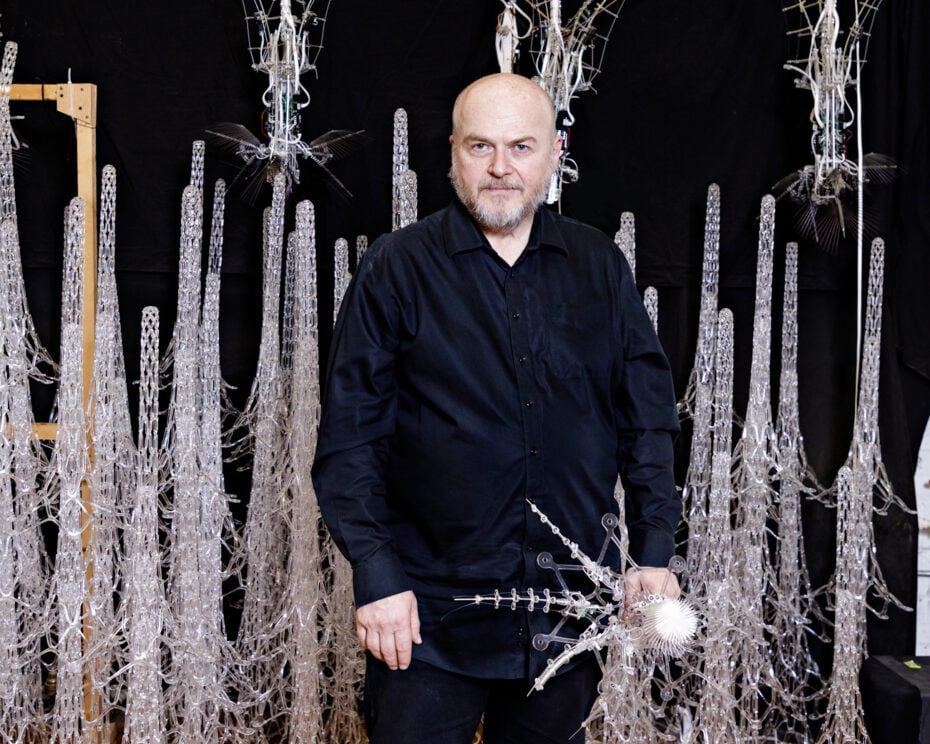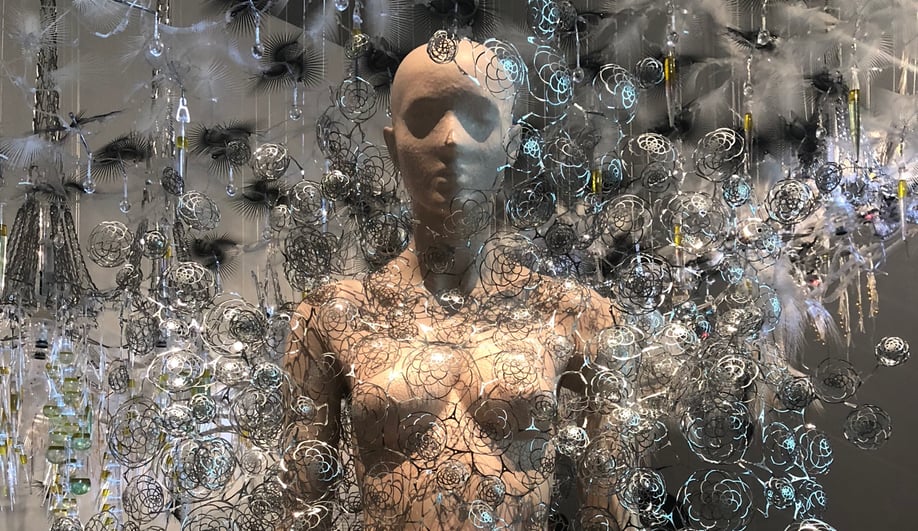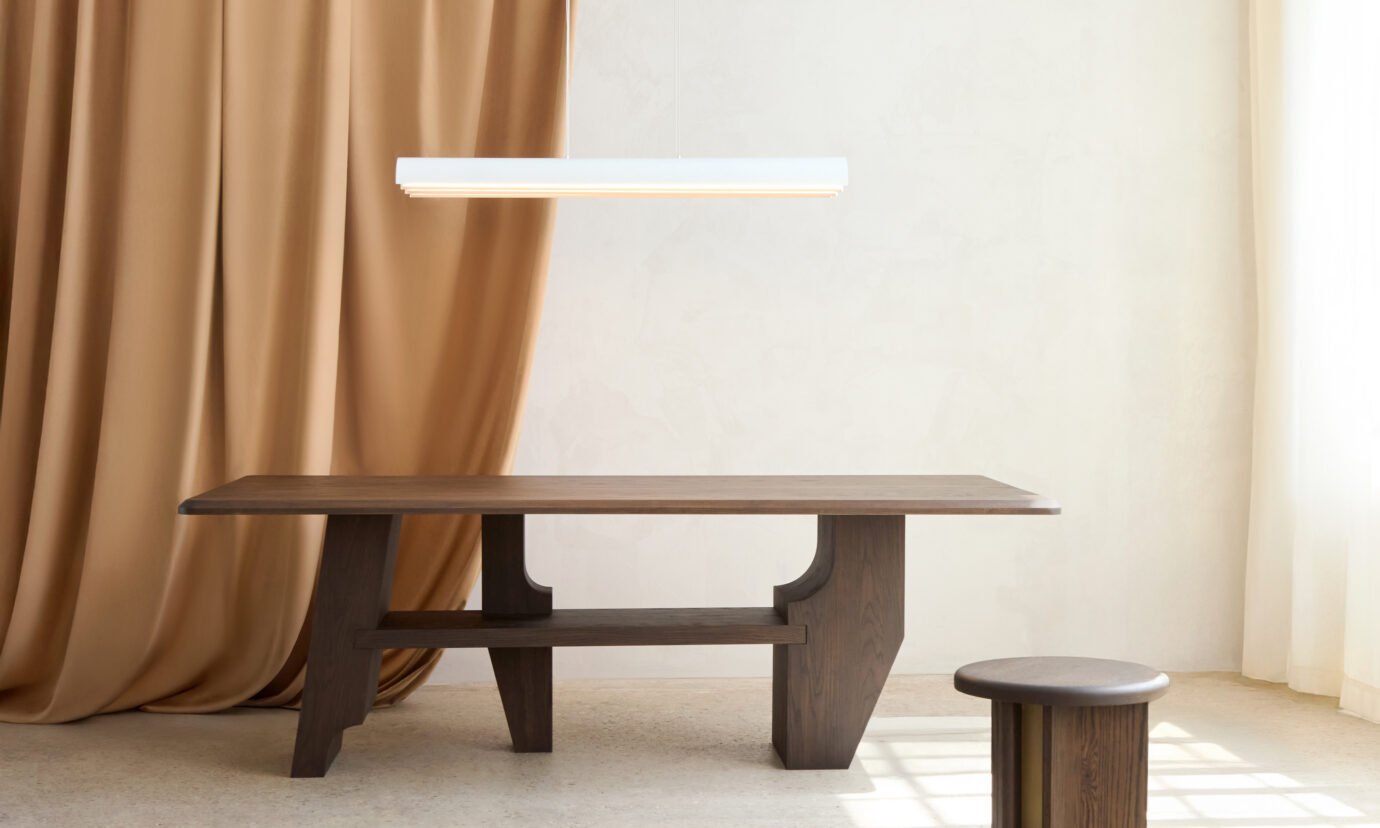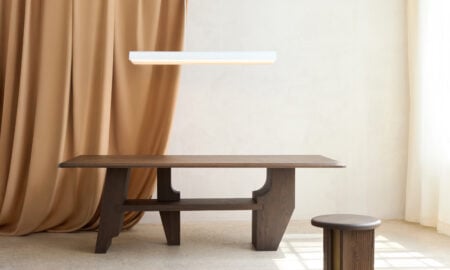Meet the Enigmatic Mr. Beesley, Architect

Inside Philip Beesley’s Sterling Road studio, crafting 3D textiles
It’s difficult to understand the work of Philip Beesley – the analytical mind wants to give meaning to his strangely beautiful and wildly mesmerizing 3D veils made of tiny polymer nodes that are wired to respond to human presence, fluttering and shifting like Venus flytraps. I’ve given up, which is halfway to realizing that Beesley’s type of architecture is not about reducing visual experience into sound bites. Our worlds are full of rationality; so much so we feel vulnerable when we can’t find the words to explain what we are seeing. When you stand beneath a massive Beesley installation, as visitors will do at the Royal Ontario Museum this June as part of the “Transforming Fashion” exhibition, the countless nodes will flicker with a sensorial rhythm as though expressing an emotional, out-ward response. The effect is something like standing amid alien plant life.
The installation is a co-production with long-time Dutch collaborator Iris van Herpen, who is also an expert in 3D textiles and responsive design, though in the high-fashion world. Beesley and van Herpen are kindred spirits, each challenged by giving physical form to such intangibles as vulnerability, femininity and sensuality.
This is hardly the way architecture is usually described. Beesley, who also teaches architecture at the University of Waterloo, has no interest in the physicality of buildings or their pragmatic core. “If only half our neurological understanding is brain driven, why do we ignore the other 50 per cent?” he asks. “Why is boiling something down to its simplest form perceived as being better? Is a sphere better than a snowflake?”
That’s a phrase Beesley says he finds himself returning to often. We tend to think of some forms as being better than others, and to exclude those that are too complex. So, forget understanding Beesley’s installations when you meet them. Simply take in their undefinable beauty, and you might very well see the snowflakes.
See Beesley’s work in Iris van Herpen: Transforming Fashion, June 2 to October 8 at the Royal Ontario Museum.












